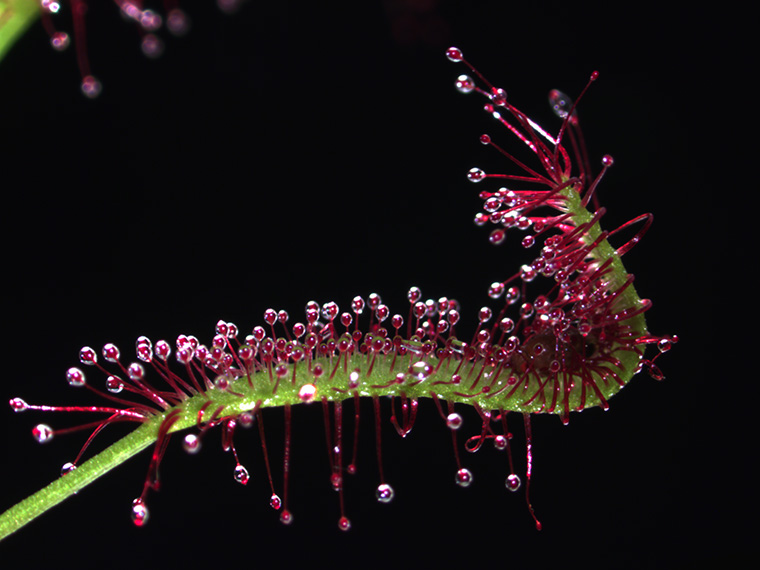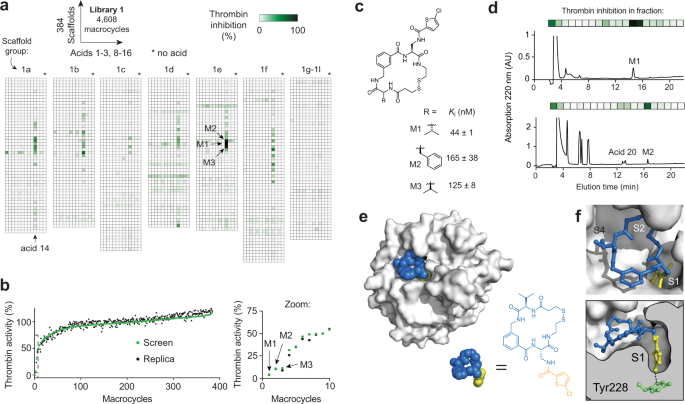2022-07-11 ワシントン大学セントルイス

Research from Washington University in St. Louis and the Salk Institute details how calcium molecules move dynamically within cells in the leaves of carnivorous plants, such as this spoon-leafed sundew (Drosera spatulata), in response to touch from live prey. (Photo: Salk Institute)
肉食植物の葉の細胞内で、生きた餌に触れた際にカルシウム分子がダイナミックに動く様子を明らかにしました。カルシウムの変動は、防御ホルモンの分泌を増加させ、獲物を捕らえるために葉を動かすことにつながると思われます。
この発見は、植物が環境とどのように相互作用しているかについての科学者の理解を深めるものです。
研究チームは、遺伝学的手法を応用し、昆虫の獲物が葉に降り立ち、粘着性の分泌物によって葉に捕獲される際の、葉内のカルシウム分子の動的な変化を画像化した。肉食性でない植物では、カルシウムのシグナル伝達は、害虫を撃退するためのジャスモン酸防御経路の起動など、生命維持に不可欠な多くの役割を担っている。
また、ジャスモン酸は電気的な活動にも反応する。これは、ヒナギクなど一部の肉食植物が獲物を捕らえる際に重要な要素である。そこで研究チームは、肉食性でない植物がもつこの防御経路が、ヒメジョオンの肉食性行動にも必要なのではないか、と考えた。
その結果、葉が内側に曲がって昆虫を消化液に巻き込む際に、ジャスモン酸が通常標的とする遺伝子の活性化に、植物細胞内のカルシウムの変化が必要であることが判明した。さらに研究者らは、サンショウウオの葉が、非生物の餌を与えられたときやカルシウムチャネルが遮断されたときには、あまり曲がらないことを確認した。
これらの結果は、カルシウムが昆虫の獲物捕獲反応を助けることを示しており、他の研究結果と合わせて、ジャスモン酸が昆虫の消化に関与しているという考えを支持するものである。
<関連情報>
- https://source.wustl.edu/2022/07/best-offense-is-a-great-defense-for-some-carnivorous-plants/
- https://www.pnas.org/doi/abs/10.1073/pnas.2206433119
カルシウムの動的なシグナルが食虫植物の摂食応答を媒介する Dynamic calcium signals mediate the feeding response of the carnivorous sundew plant
Carl Procko , Ivan Radin, Charlotte Hou, Ryan A. Richardson, Elizabeth S. Haswell and Joanne Chory
Proceedings of the National Academy of Sciences Published:July 12, 2022
DOI:https://doi.org/10.1073/pnas.2206433119
Abstract
Some of the most spectacular examples of botanical carnivory—in which predator plants catch and digest animals presumably to supplement the nutrient-poor soils in which they grow—occur within the Droseraceae family. For example, sundews of the genus Drosera have evolved leaf movements and enzyme secretion to facilitate prey digestion. The molecular underpinnings of this behavior remain largely unknown; however, evidence suggests that prey-induced electrical impulses are correlated with movement and production of the defense hormone jasmonic acid (JA), which may alter gene expression. In noncarnivorous plants, JA is linked to electrical activity via changes in cytoplasmic Ca2+. Here, we find that dynamic Ca2+ changes also occur in sundew (Drosera spatulata) leaves responding to prey-associated mechanical and chemical stimuli. Furthermore, inhibition of these Ca2+ changes reduced expression of JA target genes and leaf movements following chemical feeding. Our results are consistent with the presence of a conserved Ca2+-dependent JA signaling pathway in the sundew feeding response and provide further credence to the defensive origin of plant carnivory.


